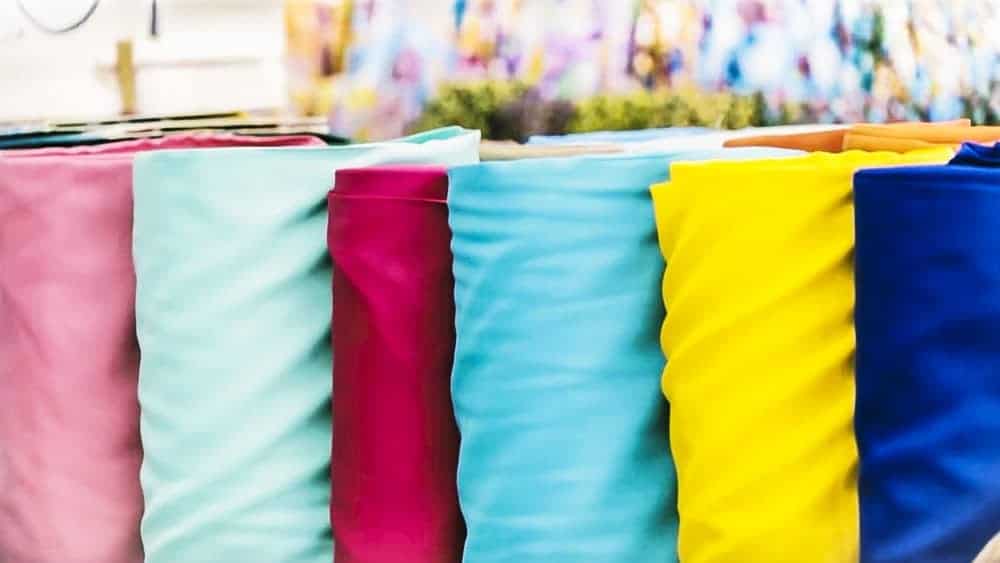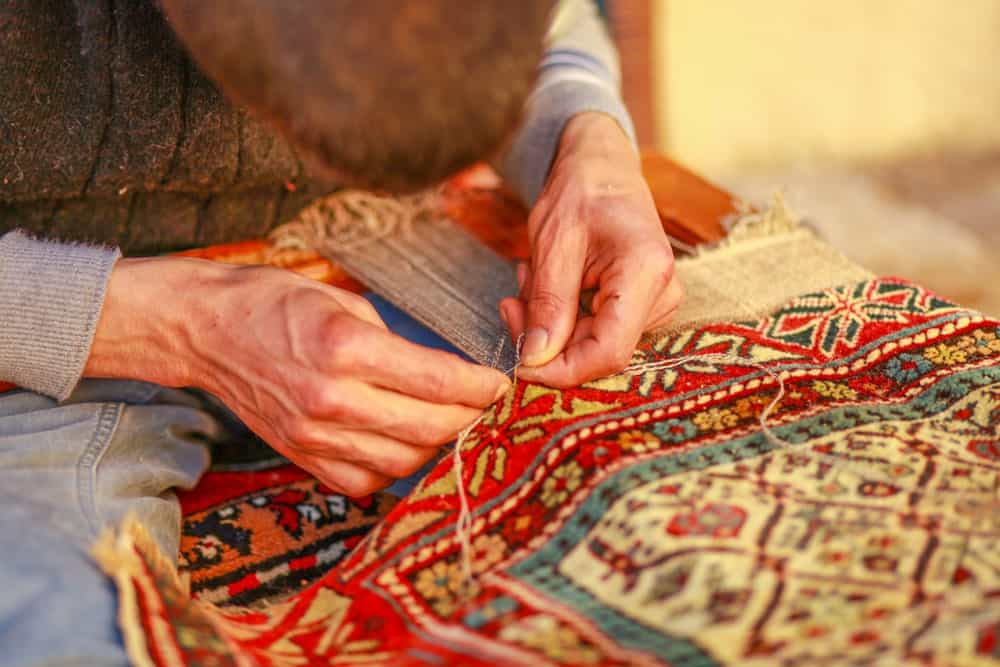Many of us enjoy the feel and smell of leather. There are many different types of leather from hippopotamus to kangaroo that are used for shoes and clothes. Check out this list and find the one you just might want to be your new favorite.

Since the beginning of humanity, we have used leather in various ways and for many purposes. One of the most common ways is for clothes and shoes. This practice continues today and allows us to have the most beautiful leather products imaginable. There are many different types of leather, all with their unique characteristics. Continue reading to find out all the details about the different types of leather for apparel/footwear.
Table of Contents
- Grades of Leather
-
Types of Leather
- Calfskin
- Cowhide
- Pigskin
- Suede
- Chamois
- Nubuck
- Shell Cordovan
- Pull Up Leather
- Rough Out
- Scotch Grain
- Vegetable Tanned Leather
- Patent Leather
- Buffalo Leather
- PU Leather
- Exotic Leather
- Alligator / Crocodile Leather
- Anteater
- Camel Leather
- Chicken Leather
- Deerskin
- Eel Leather
- Sharkskin Leather
- Snake Leather
- Elephant Leather
- Giraffe Leather
- Hippopotamus Leather
- Kangaroo Leather
Grades of Leather
Leather has many different variations or grades. Leather is made from the skin, or hide, of animals, and the best leather comes from an area of the animal that is not touched or injured. This untouched area is usually the back of the animal. Less than perfect leather comes from the stomach, legs, or head. The leather grades are listed below.
Full Grain Leather
Full-grain leather is the best quality of leather, and it is the outside of the animal’s hide that is just below their hair. When it is full-grain, it means that it has not been sanded or buffed. This process removes any imperfections from the leather.
The leather hide is porous and tight, which means it prevents the retention of moisture and tends to be thick. Leather thickness can make a difference in the durability of it. There are only a minimal amount of parts on the animal that make it ideal for full-grain leather.
Using only specific animal parts means it is more expensive and requires more difficult processing by leatherworkers. Full-grain is a strong leather and ages well and created a nice patina with proper care. Full-grain leather is the real leather most people want.
Top Grain Leather
Top grain leather is similar to full-grain leather, but it receives a fair amount of sanding to remove some millimeters off the top. This sanding process helps to get rid of imperfections. This leather is thinner, not as durable, but more uniform. It has a smooth finish and handles stain well. It does not breathe as well or develop as nice a patina. It is not going to hold up as well as full-grain.
Genuine Leather (Corrected Grain Leather)
You will see the term genuine grain stamped on many items you buy. Genuine leather is the leftover leather after the top layers have been used. Just about any hide from any animal can create genuine leather. It has a significant amount of sanding, usually dyed and stained. This pigmented leather is cheap and what you will find in a more affordable shoe or piece of clothing.
Bonded Leather
This leather is worse than genuine leather and even more of the leftovers and scraps than genuine leather. They are usually shredded and sprayed with adhesives and polyurethane. Genuine leather is a terrible quality of leather, and it does not smell good. The end result is a mix of leather and plastic that bonds together. This may even be considered fake leather.
Types of Leather
The leather industry has seen ups and downs over the decades, but it will never go away. Leather is prevalent in the footwear market. There is standard leather that you see just about every day. There are also some more unique types of leather that you may never see or have to go out of your way to find. This list covers many of the different types of leather you can find.
Calfskin
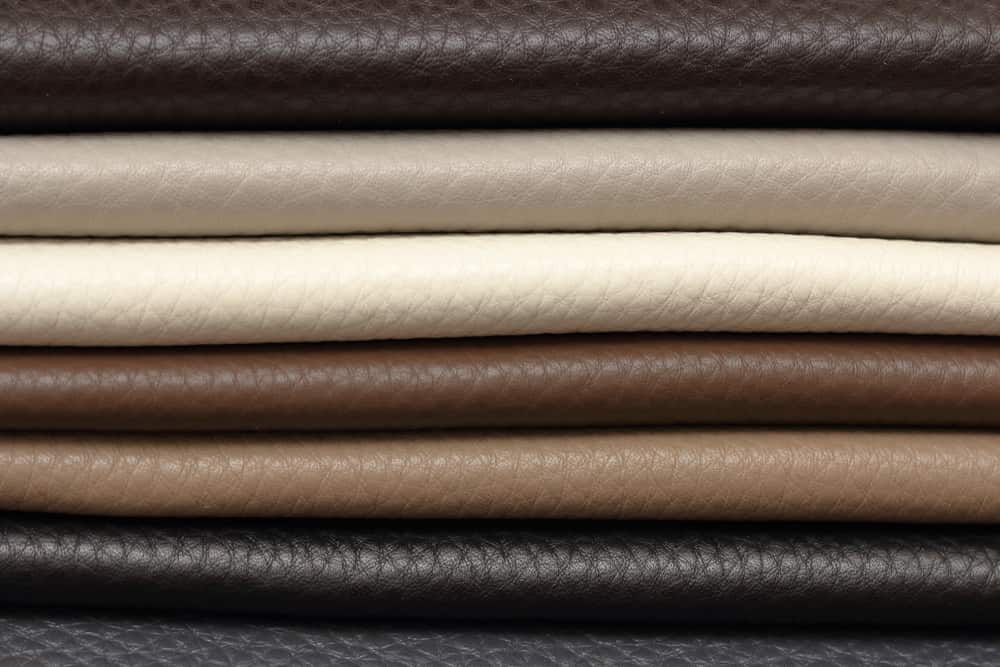
Calfskin is the most common type of natural leather to make high-quality goods and shoes. This leather is from young calves that are between 6 months to 12 months old. Calfskin is also referred to as vellum. Depending on the area from which the calfskin comes, it has different characteristics. European calves tend to have better quality and large hide because they have more stringent breeding standards. This leather has a higher grain and minimal imperfections.
It is ideal for high-end clothes and dress shoes. Calfskin produces a fine grain but durable leather. Calfskin does tend to scuff or scratch, but as long as they are not too deep, they can be buffed or polished.
It will develop a lovely patina as it ages. It is easy to dye and comes in many colors. This leather can have a nice shine due to burning and finishing processes. This leather shoe forms well to your feet, giving you a comfortable shoe. It does not need much maintenance, just some polishing, and care, so it does not crack or dry.
Boxcalf
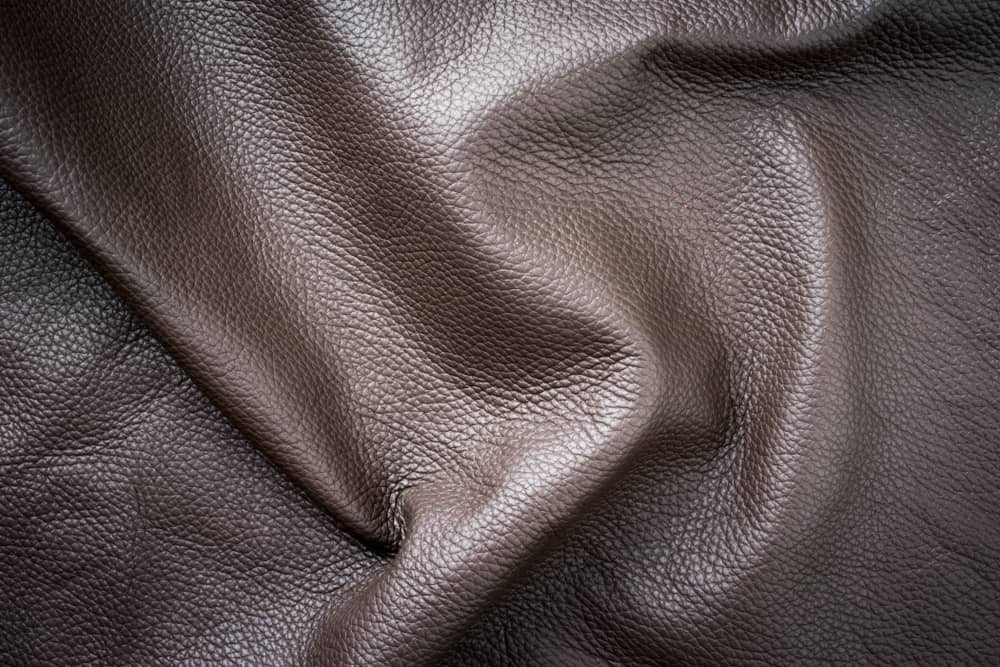
Boxcalf is premium calfskin. High-end luxury brands like Hermes use this kind of leather for their vintage handbags. The tannery uses chrome salts on calfskin to tan it.
Veal
While this leather is similar to calfskin, it tends to be a little older, around three months to six months old. This leather is more coarse and not as smooth as a traditional calfskin.
Cowhide

Calfskin and cowhide come from the same animal, a cow. Cowhide leather comes from an older animal and is often a byproduct created by those in the food industry. This hide produces a suitable type of leather for shoes and other apparel. Cowhide is thicker and undergoes a similar tanning process as calfskin. Cowhide is ideal for work boots or shoes that will take a beating because it is wider, stronger, and more fibrous.
Apache
This type of cowhide is also called a distressed or crazy horse. This leather is usually treated with oil and wax to give it a vintage, or old, look. This type of leather looks aged already when you buy it. The process helps the leather be waterproof and protects it from scuffs. It often has a top layer of wax to protect it. Apache is light tanned or sanded and has a unique look to it. Apache is an excellent leather for boots and items that will be used outside.
Bullhide
Bullhide is a thick leather that comes from the cow’s shoulder. It is sturdy, dependable, and thick. It will protect your feet from any type of damage. When it is tanned, the leather shrinks, emphasizing imperfections and wrinkles.
Deertanned
Deertanned is cowhide that is processed in a specific way. This processing gives us the best quality leader, either from deer or cow. Deertanned leather is soft to touch and has a minimal number of flaws or imperfections. Deertanned is a great leather for boots.
Pigskin

Pigskin is not commonly used for shoes but more for footballs and high-end gloves. This leather comes from a specific type of mammal from the species of pig called peccary. These pigs are most often found in South America and Peru.
The peccary is not raised on farms and is commonly hunted. The peccary leather is thick, pliable, and soft. The softness makes the item it created flexible and able to sustain hard wear.
It does not damage easily but does need some care. It does not do that well in the rain. This leather has a defined grain to it and is not shiny. The texture and grain of this leather make it stand out. It was made famous by Enzo Bonafe and the button boot. This leather is not that expensive and is ideal for casual shoes.
Suede
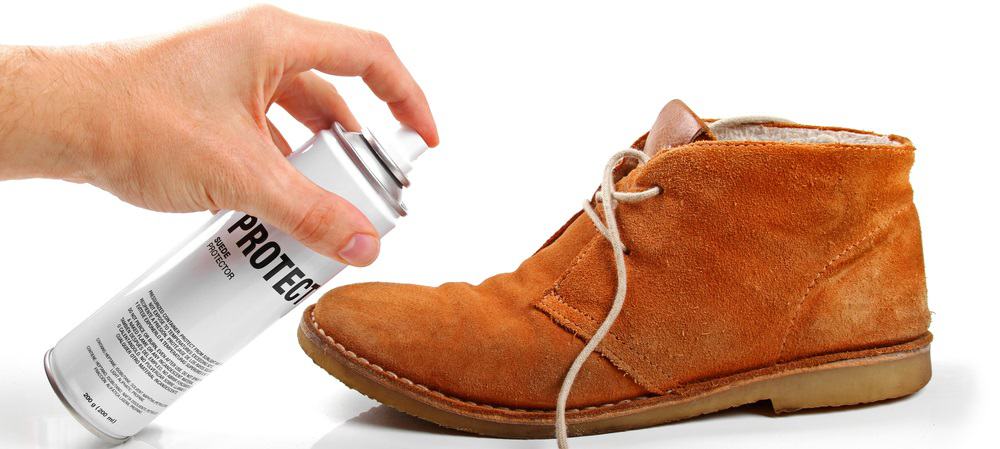
Suede is an excellent type of leather for sneakers and a leather jacket. Suede is what you get to when you remove the hair and trim down the grain of the hide. You get to the fleshy part or the split leather part of the coat.
Suede is buffed and sanded, which creates a texture that is thin and soft and has a nap to it. It is easy to work with and ideal for informal types of shoes. Suede acts as a sponge with water, and it stains easily. It is a more fragile type of leather. Suede comes from multiple animals and has different qualities depending on the animal.
Cowhide Suede

Cowhide Suede comes from the fleshy part of the cow or calf. There are many different names for suede, such as rawhide, split cowhide, bush cut, and rough out, but they are all suede. Suede from a calf is generally softer than the suede of an older cow.
Sheepskin Suede
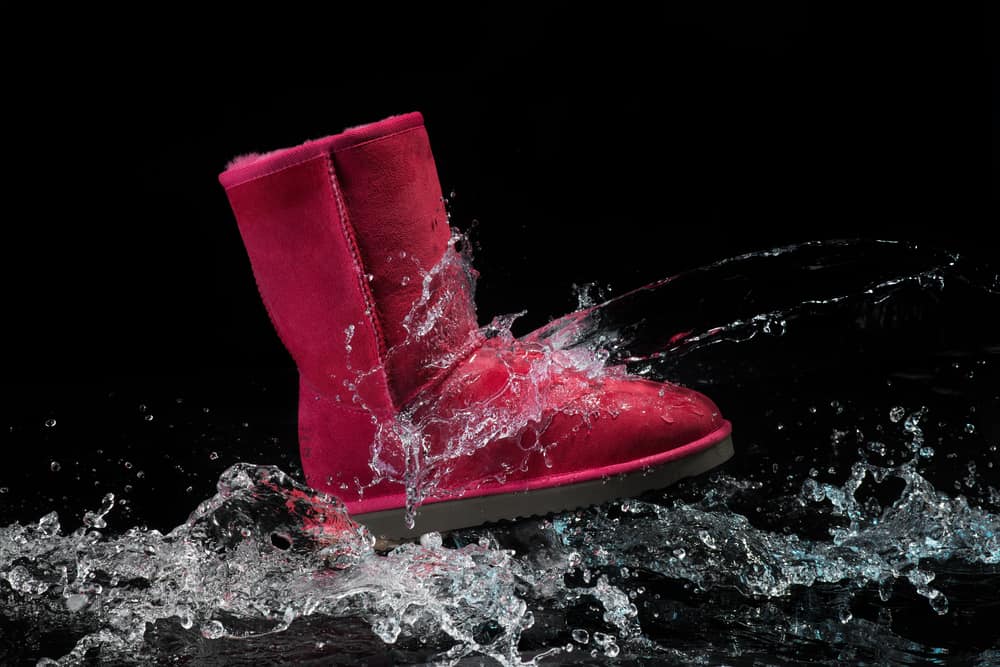
This suede comes from a sheep and is most likely the softest suede, especially when it is from the hide of a lamb. This may also be considered lambskin leather. This suede has a velvet texture and is delicate. It can withstand a small amount of water as long as it is only a drizzle. It can also keep you warm in the cold.
Pigskin Suede
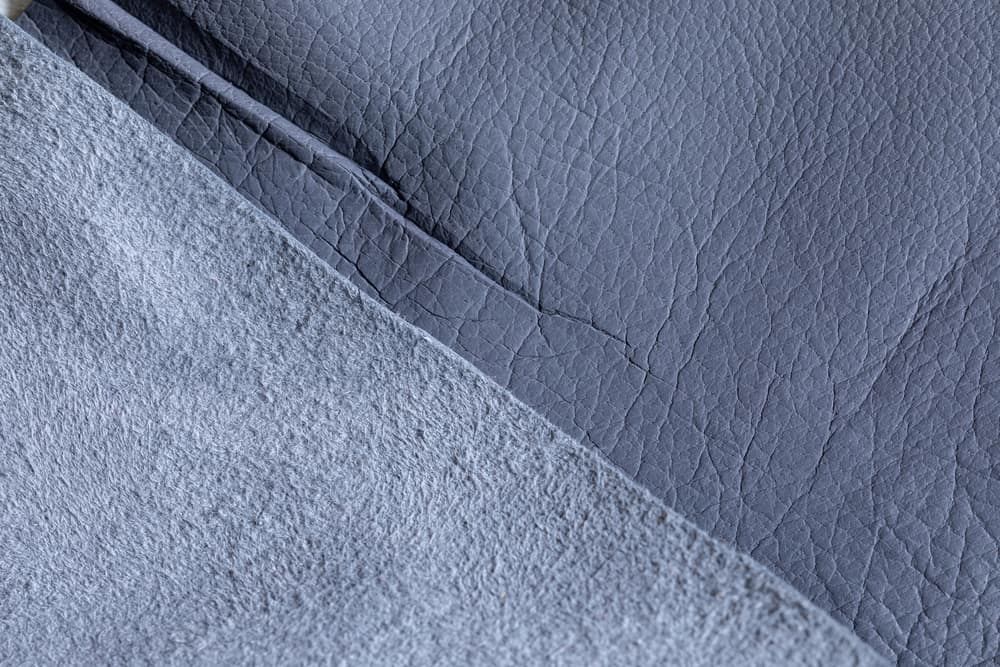
Pigskin Suede is not the most common suede and the least popular. Pigskin Suede is a tougher and more coarse kind of suede. It is stiffer and has less nap. It is more durable and does not damage easily. It is lighter weight than cowhide suede.
Chamois
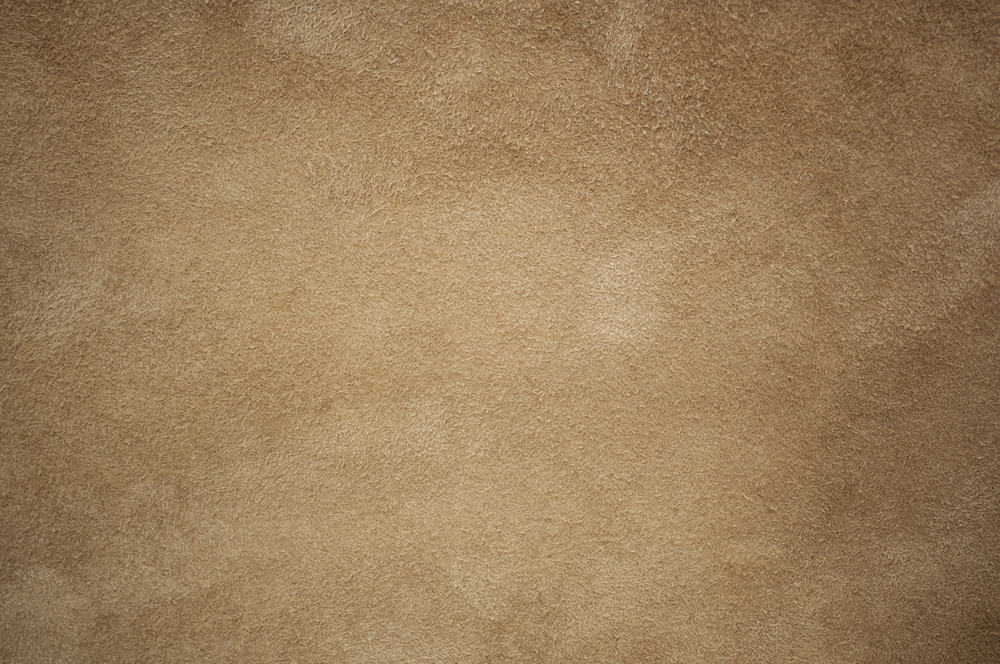
Chamois was traditionally created from the hide of a mountain goat in Europe. Today, you are going to find that chamois is made mostly from the fleshy part of sheepskin. It is somewhat like suede but not exactly. It goes through a process of sanding and buffing, which removes the grain and reveals the flesh split.
Chamois stays soft but not as smooth as suede. It has a thinner nap and absorbs water really well. These are typically made into polishing cloths for your shoes or car. Chamois is a porous type of leather, and it requires a long process of oil tanning. It is hard-wearing and does not need to be shined.
Nubuck

Nubuck comes from leather from cattle. It is created from the part of the hide that is the grain. It is light sanded to create a soft nap, but the grain makes it more durable and able to repel water. Nubuck tends to be a great balance of suede and leather. It gives you the velvety texture of suede but the durability of leather.
Shell Cordovan
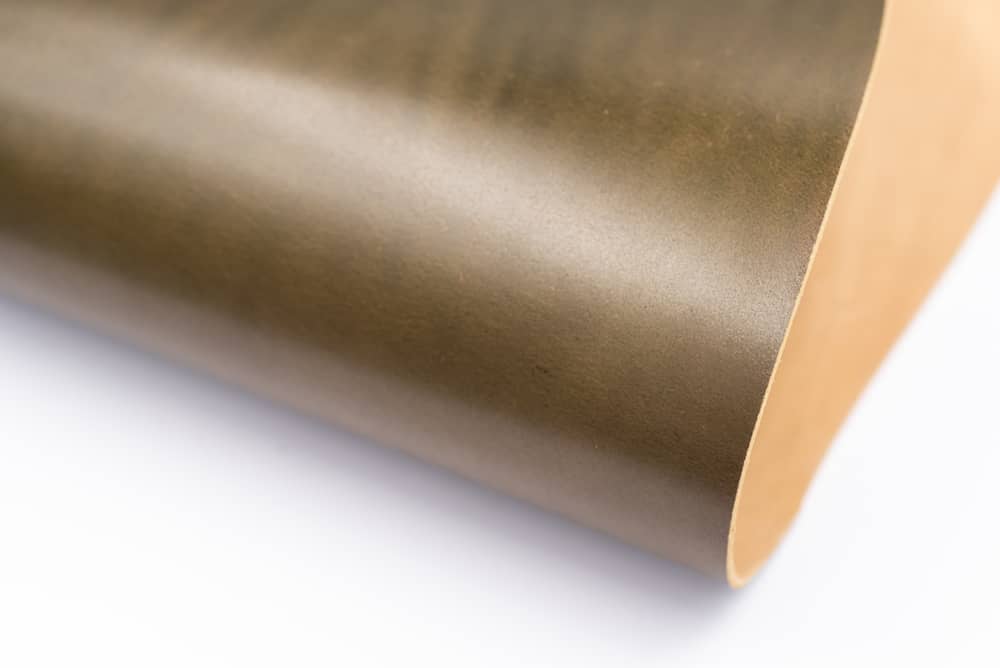
Shell Cordovan is the top of the line when talking about luxury shoe leather. This leather does not start that way, and you can only call it leather after it goes through its processing, which takes about six months. It undergoes a vegetable tanning process, which involves many steps.
Shell Cordovan is a dense, fibrous membrane that is removed from the hindquarters of a horse. It originated in Cordoba, Spain. It does not have any pores that are visible, and it never creases.
Over time, it ripples and will last for decades when cared for properly. It is durable and resistant to water. It can be challenging to dye and only comes in a limited amount of colors. Shell Cordovan is a rare and expensive type of leather, usually found in boots and dress shoes.
Horsehide
Horsehide leather is different than Shell Cordovan. Horsehide comes from the front of the horse, making it incredibly tough but has some elasticity. Horsehide is ideal for rugged boots.
Pull Up Leather
This leather is one that is oiled and waxed heavily. You can pinch a spot on the leather, and it will change color to a lighter tone. Pull-up leather does not need much maintenance and is incredibly durable. It will develop an excellent and rich patine. It will absorb scratches, but it is not scuff-proof. Pull-up leather is ideal for casual boots.
Chromexcel
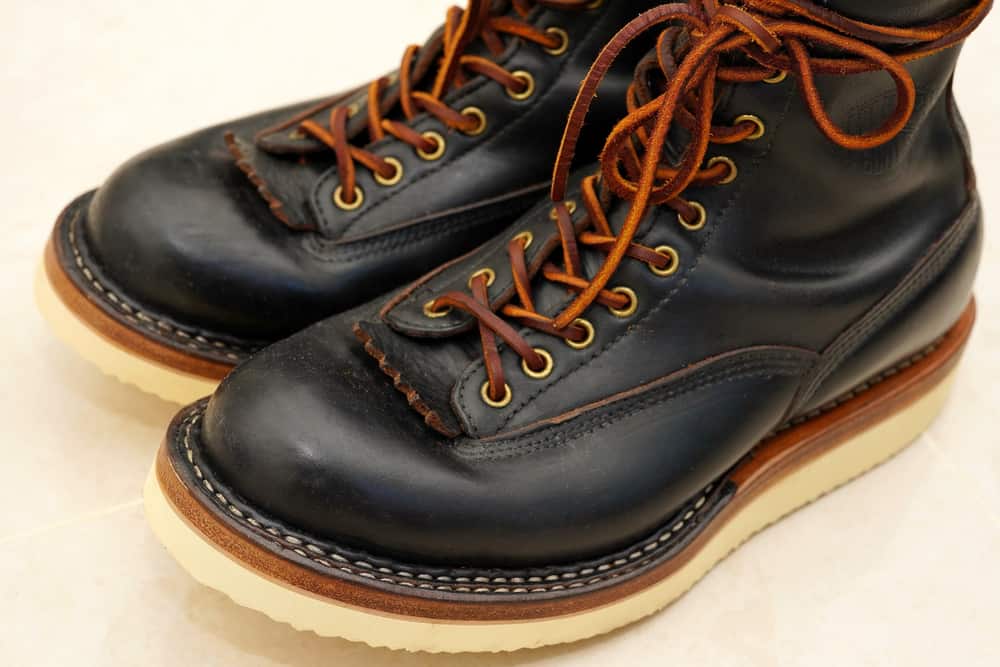
Chromexcel was the original type of pull-up. Chromexcel is typically sourced from horses, but cowhide can also be used. Chromexcel is hard to produce because it requires vegetable tanning and an 89 step process to prepare it. It is incredibly supple and has an amazing reputation.
Rough Out
The fleshy part of the cow can be rough, which is why it has the name rough out. It often has a nap that is soft and does not need much maintenance. It is durable and has been the preferred leather for work boots, mountaineering, and military boots. They do not require much care. The grain of this leather stays intact, making it tough and durable. It can absorb a fair amount of water.
Scotch Grain

This leather is originally from Scotland, and it has an embossed texture. This texture is distinct and stands out because it looks like pebbles. This look is created in the tannery.
This leather is often referred to as Pebble Grain. The leather is shrunk to create unique grain patterns. Scotch Grain is a durable, weather-resistant, and low maintenance type of leather.
It is becoming more popular even though the texture is artificially made. Scotch Grain is a thicker leather which makes it easy to hide any scratches or imperfections. It needs some light polishing but not too much because the wax can build up in the texture.
Vegetable Tanned Leather
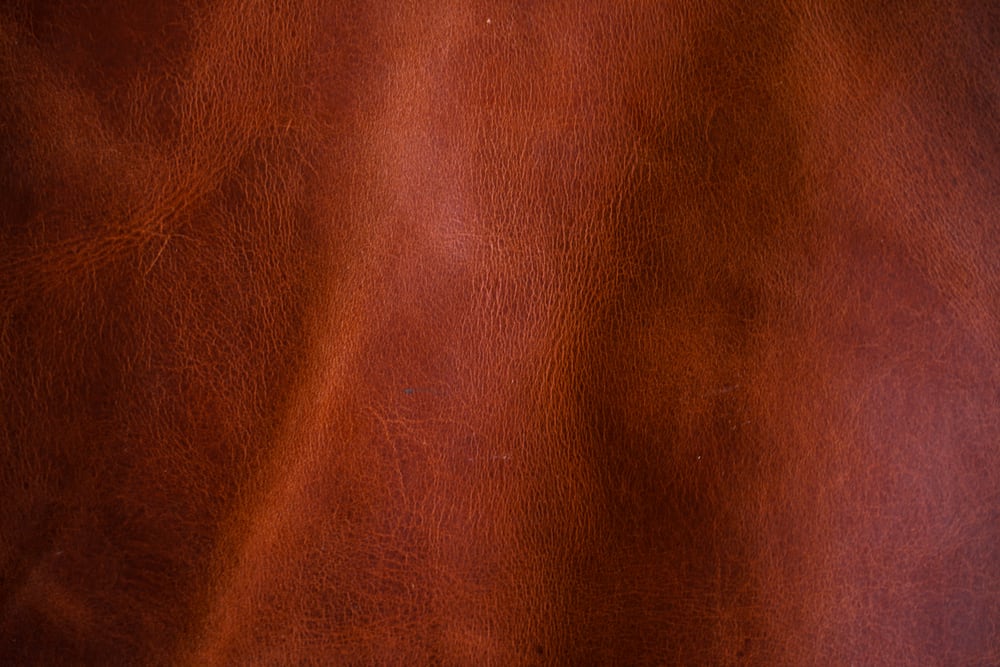
Using rawhide for shoes and apparel is a terrible idea. It is stiff, and it is going to decompose. No one wants that to happen with their clothes and shoes. Over the centuries, there have been many processes used to handle leather.
Eventually, vegetable tanning was created, and that is the process that is most widely used today. It is a long process, but it is the one that is most reliable. This process uses tannins from trees and allows the leather to retain its natural color.
It does darken over time. This process is long and expensive. The hide must soak in many treatments. Leather that is vegetable tanned does not like water and only comes in a certain amount of colors.
Patent Leather
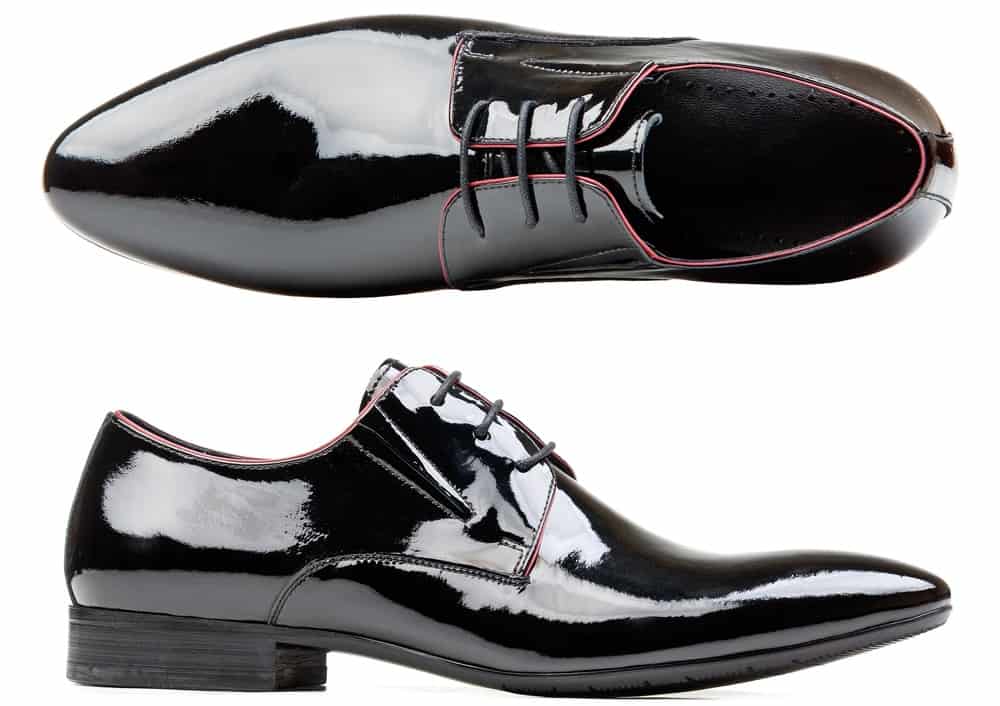
Patent leather shoes have a high shine that is very glossy. This type of leather is usually reserved for black tie events. The patent leather process originated in Japan, and it uses a method that lacquers the leather, giving it a smooth exterior and a finish of a high gloss. This type of shoe is usually only worn for formal events.
Buffalo Leather

You may hear this referred to as Buffalo, Water Buffalo, or Bison. They are often used interchangeably. These hides tend to come from Africa, Asia, and the US.
Buffalo leather is an ideal choice for boots and bags because of its durability. This type of leather lasts for a long time. It has natural imperfections and is grainy and porous. It has a large amount of tensile strength, much greater than a calf. This leather is soft and comfortable.
PU Leather
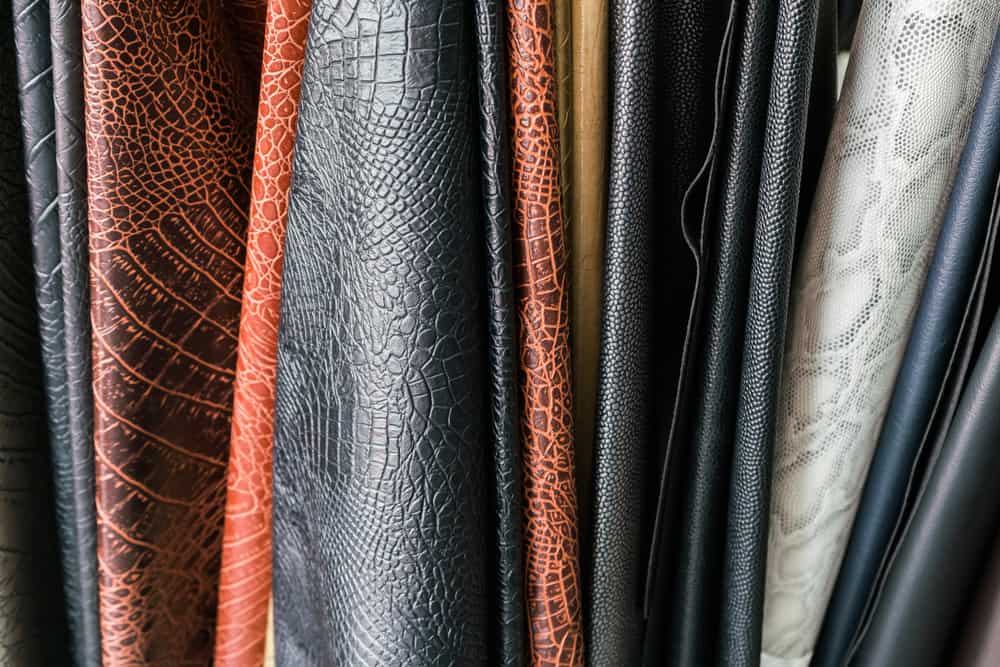
PU Leather tends to be the leather of choice for vegans because it is not exactly leather. It is more of faux leather. It is a bonded leather or synthetic material like polyurethane. This is not high-quality leather. The only real reason you would choose it is if you have strict thoughts and feelings about the exploitation of animals. This is synthetic leather but it is also considered vegan leather.
Exotic Leather

It is possible to make leather from just about anything. The leather can be used for shoes or bags, or other goods. Many of these exotic leathers have distinct characteristics.
Alligator / Crocodile Leather
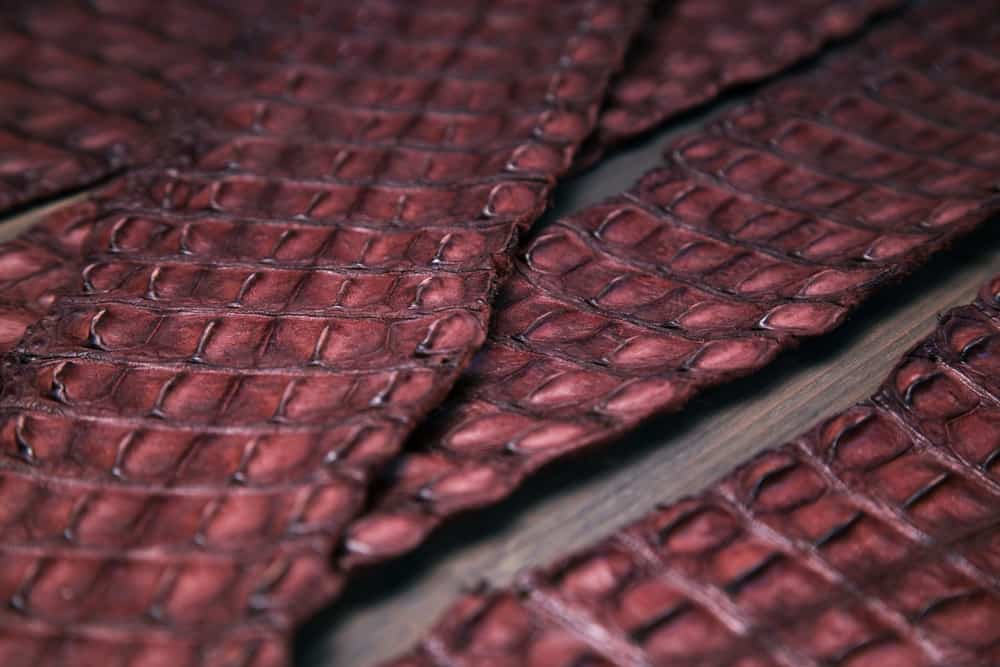
Alligator and crocodile leather is the most luxurious and high-end option out of all leather. It is often costly. There are about four species that create shoe or belt leather.
They each have their own unique characteristics. Most people will not be able to tell the difference between them just by looking at a pair of shoes. They are often durable and strong, and difficult to stretch.
Leather comes from the belly of the alligator or crocodile. The stomach is a soft area that is protected by a plate of scales. While they are both expensive, the alligator is considered to be premium leather. They have a high sheen and, when care for, will last forever.
American Alligator
American Alligator is the largest of the reptiles that produce leather. They weigh about a half-ton and are about 5 meters long. The leather from this alligator is typically found in a dress shoe.
They are sourced from special farms in the Southeast portion of the US. This leather is soft and durable and usually is found in olive green or grey. This leather is easier to process because of its softness, which also makes better bags and shoes.
It has a distinct scale pattern that is rectangular and not uniform. One way to distinguish genuine alligator skin from fake is the umbilical scar, which is not able to be replicated.
The Caiman
This alligator is found in Central and South America. It is a cousin of the alligator and is much smaller. The hide is smaller, and more of them are needed to manufacture a piece of an item.
They are easy to find and cost less than the leather of an alligator or crocodile. It will cost more than calf leather. Because this reptile is bony, the leather is stiff and hard to work. It does create a beautiful pattern on a shoe.
Saltwater / Freshwater Crocodile

The crocodile can be quite large. Crocodiles are powerful reptiles that produce large hides, which are ideal for upholstery and furniture. It has a similar patter structure to the alligator and if you do not know what to look for, you would not know the difference. They have high-quality hides that tend to be a little less expensive than alligators. Gucci makes a crocodile loafer.
Anteater
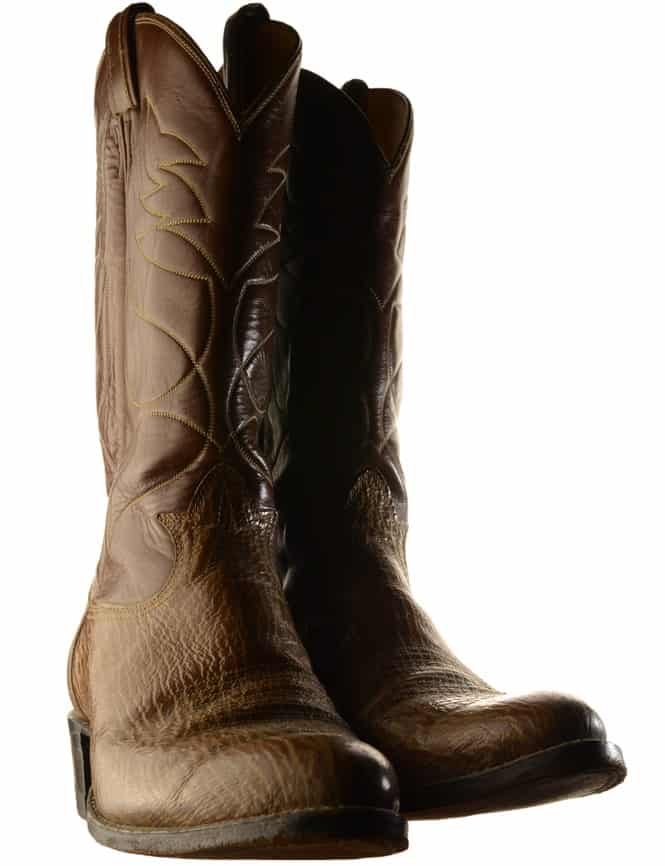
The Anteater creates a rare leather with unique properties. It is durable, and its scales form tiles that have a diamond shape that differs from alligator. The Anteater is an endangered species, and hunting is regulated strictly. The hides come from Africa or Asia. Anteater is not a common type of leather but more often found in cowboy boots. It comes in cherry, black, beige, and brown colors.
Camel Leather
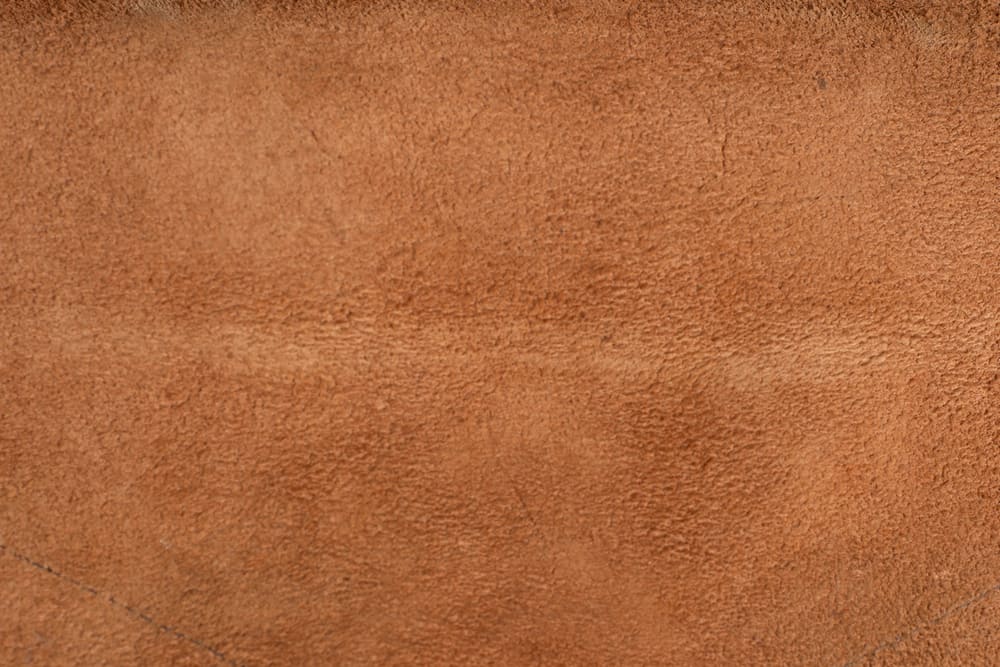
Camel leather is not a typical leather you will find. A camel must die of natural causes to use the hide. It is mostly found in Africa and some parts of Asia.
Camels are valuable in their local area. Camel leather is resistant to scuffs and scratches. It is mostly found in coats and creates a soft leather texture. Camel leather has ten times more fiber in a square centimeter than cowhide. This leather mostly comes in tan, caramel, and desert orange. It is incredibly rare to see shoes made from Camel leather.
Chicken Leather
While chicken is abundant today, its leather is considered exotic. It is not typically the first animal you think of when you think of a nice pair of leather shoes. It has a nice texture and is incredibly durable. Some of the most luxurious items are made from chicken leather. This type of leather must be conditioned regularly so that it does not crack or soften. Chicken is a nice leather for bags and accessories.
Deerskin
Deerskin leather encompasses a large number of animals that are not just deer. It also includes moose, elk, Caribus, and many others. Deer leather is incredibly soft. Some say it is the softest leather you can find. The skin is pliable, which makes it easy to scratch. It tears easily, also making it less desirable for shoes. The leather is thin and breathes well, which means you will not sweat a lot from wearing it. It does not like water or rain, and these leather goods must be waterproofed.
Eel Leather
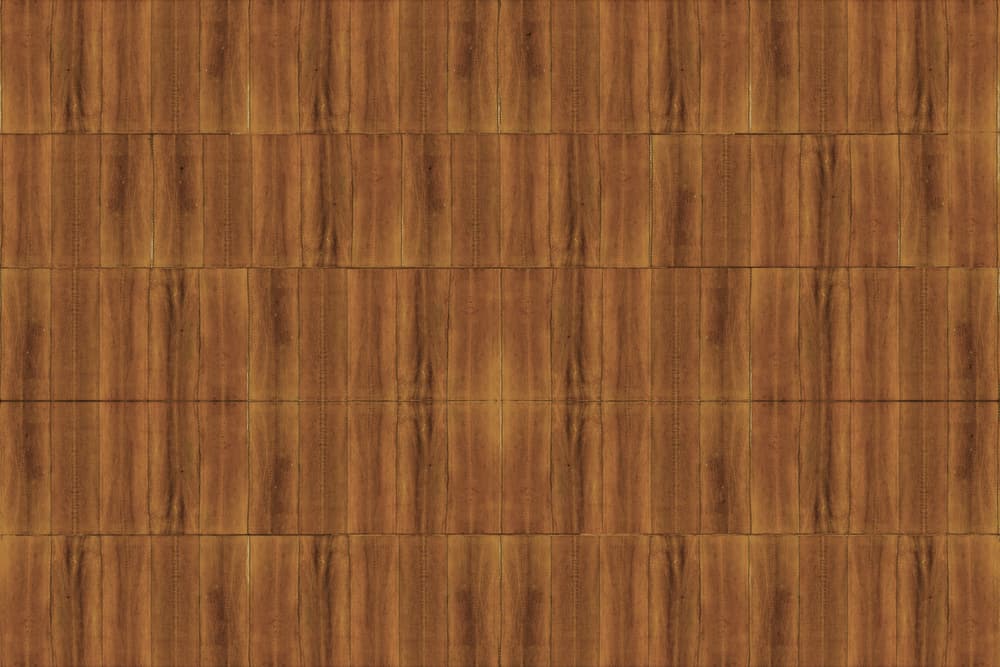
Eel are fish that are elongated and come in many sizes. They can be eaten but also used for leather goods. Most Eel skin comes from Asia, specifically Korea and the Philippines. Eel does not have any scales and is fragile and thin. Since it is a small fish, it takes many skins to make a shoe or other item. It has a unique strip of patterns. This leather needs a fair amount of conditioning and moisturizing.
Sharkskin Leather
Sharkskin leather is the most durable and toughest leather of all the leathers. It can handle the most abrasion and is resistant to scratches. It has a unique grain that varies greatly depending on the shark from which it comes. It is hard to break in sharkskin, and it not the best for hot weather.
The skin of a shark is tough. Sharkskin often has a raised surface that takes on dye differently. It usually is lighter on the bottom and gets darker as you move to the top.
It creates a mottled look to the grain. Sharkskin has long fibers and is ideal for work boots. It needs to be cleaned, moisturized, and conditioned regularly but will last forever. Sharkskin is expensive leather.
Snake Leather

Snake leather contains many species of snake, but the most common leather comes from anaconda, python, and rattlesnake. Among them, python is the most popular because it is incredibly durable and has its color and scale pattern. Snake leather can be dyed any color, but the natural skin is a combination of black, brown, and white. Snake leather was more prevalent in women’s shoes but is becoming increasingly more popular in men’s shoes. They are soft and comfortable.
Elephant Leather
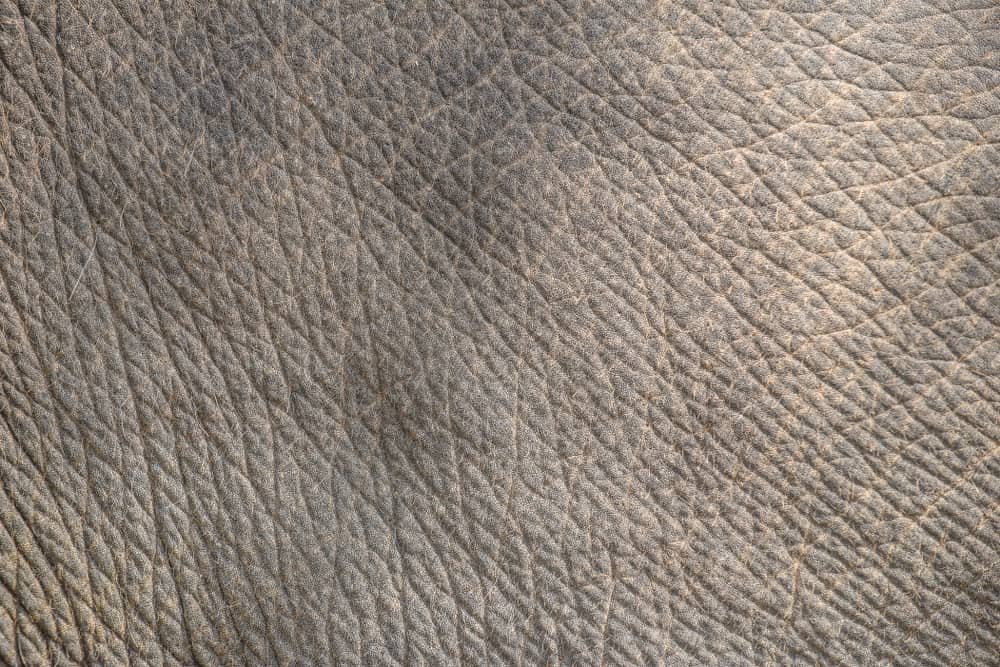
Elephant leather is heavily regulated, but it is possible to use its hide for leather. While elephants are often poached, it is rare they are poached for their hide. Elephant leather is used for shoes and bags. This large animal creates leather with unique properties. It usually has a dull color but resists scratches and scuffs well. The leather has a unique pattern that looks like a triangle and square grooves on the skin. The skin already has a crackled and rugged look to it.
Giraffe Leather
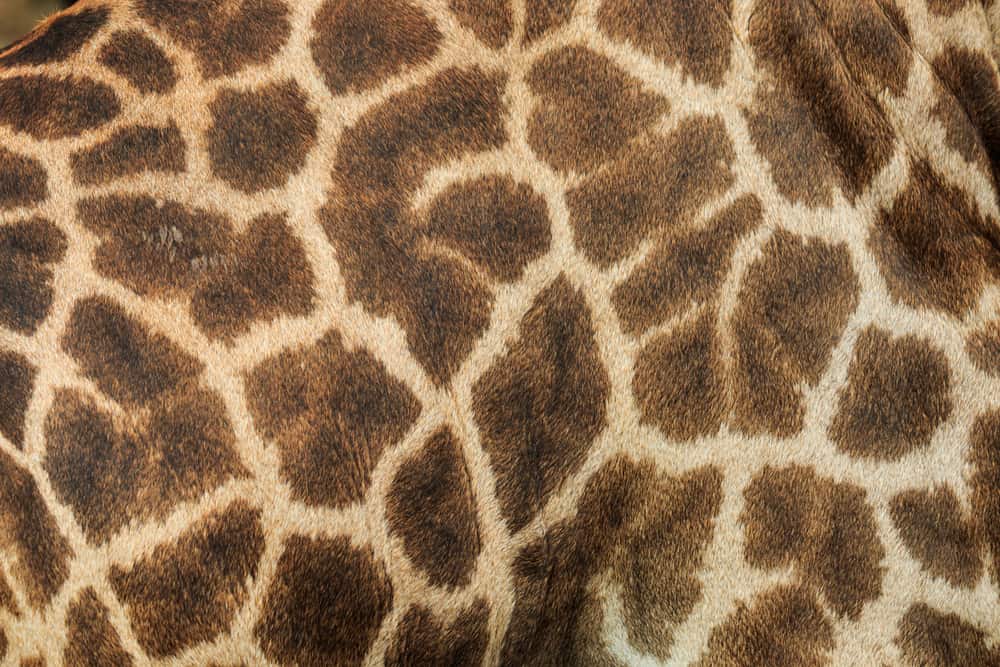
Most Giraffe is found in Africa, and this is where most of the hides are found. Giraffe is a rare leather and can only be gotten once the Giraffe dies of natural causes. A special permit is required to import the hide, adding to the cost. This leather is not sanded. It has a pattern of trapezoids on a white background. It has a medium level of softness. Giraffe leather lasts a long time and can be on the stiff side.
Hippopotamus Leather
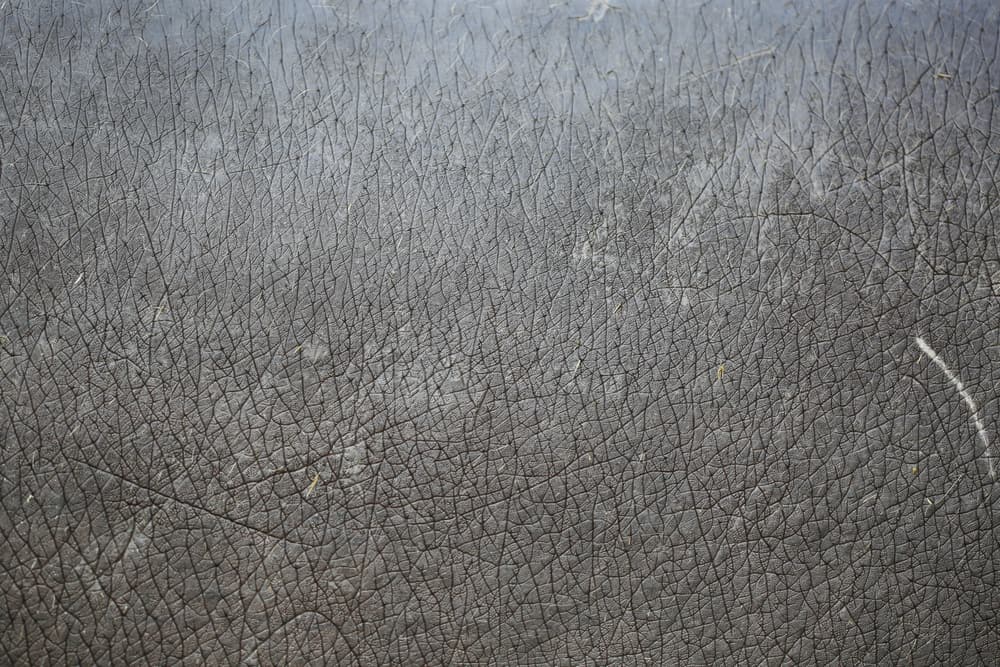
The hippopotamus is a new type of leather for shoes. Hippo leather is smoothed out with a sanding process to remove the grainy finish. Hippos are often scarred in the wild, and their hide reflects that. It is soft but remains strong. It is also a comfortable type of leather.
Kangaroo Leather

Kangaroo leather is not often found in a dress shoe. You are more likely to see it in an athletic shoe. It does not need a long break-in time. Kangaroos are widely found in Australia.
Kangaroo is soft leather and, in some ways, is better than calfskin. It is lightweight and has a tight fiber concentration. It is not resistant to scratches.
The fibers of the leather interlock instead of present in horizontal layers like calfskin. Kangaroo is a durable leather that is relatively easy to recognize because it has natural scarring. They do not make a good work boot. There are better suited to a more casual shoe.

